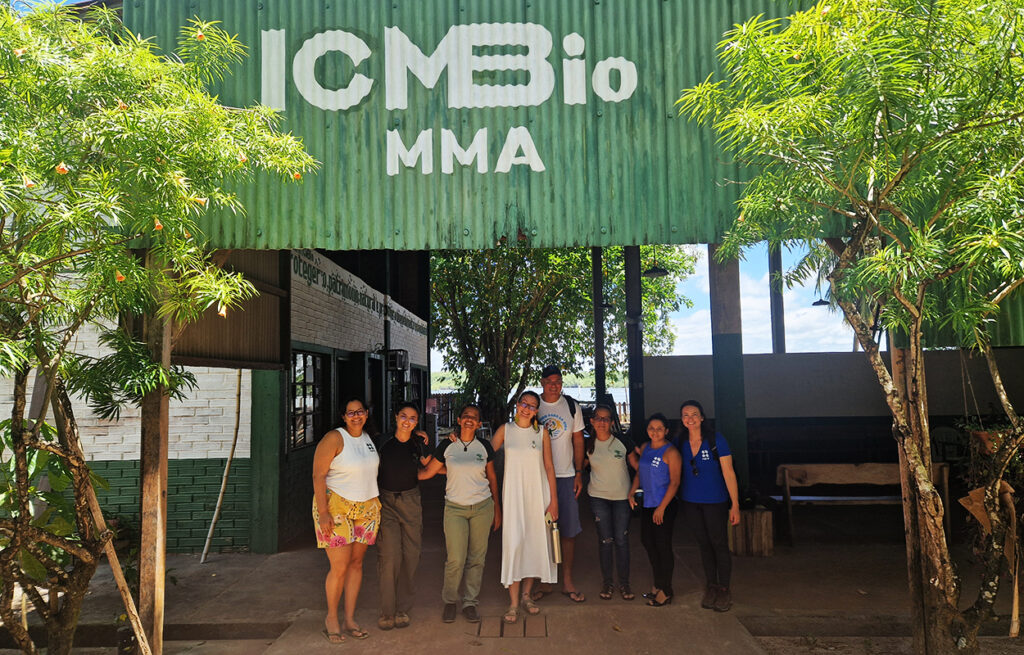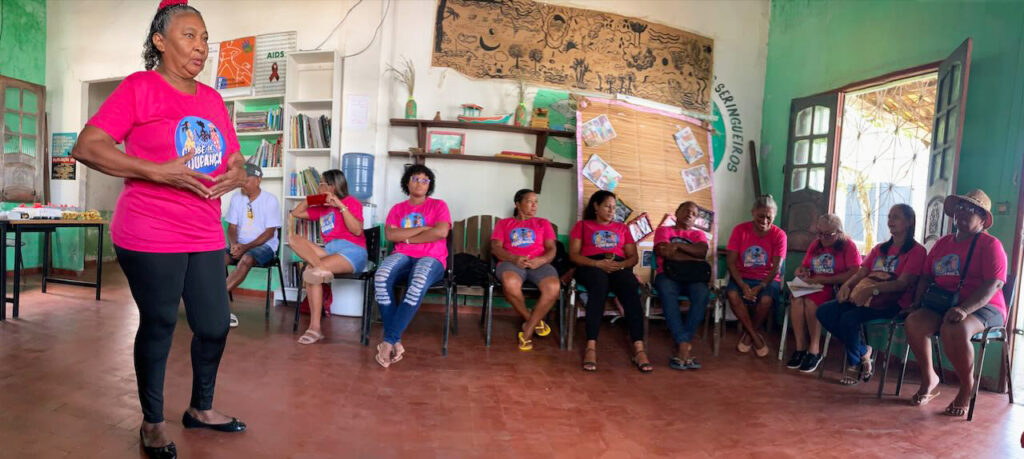In my house, growing up outside of Boston, the country of Brazil loomed large. In the late 1960s, my parents served as U.S. Peace Corps volunteers in Mateus Leme, a town in Brazil’s Minas Gerais state. Occasional slide shows of their experience dot my childhood memory. Although I didn’t visit until I was 25, the country has inspired my life. With this background, I was excited to return to Brazil to see Rare’s program along the Amazon Coast – an entirely different part of the country.
Flying into the city of Belem in Pará State, looking out over the landscape, I immediately grasped the enormity of the planet’s largest continuous mangrove ecosystem. It was unlike any I have ever experienced – half the year, it’s fresh Amazon waters, and the other half (the dry season), the salty Atlantic. Community fisheries depend on local species, like oysters, red snapper, and the famous arapaima, that migrate 100s of miles. Offshore, there are abundant deeper-water coral reefs with highly productive waters.
On Marajó island, I got nearly waist-deep in mangrove mud. I paused, listening to monkeys calling overhead, watching the diversity of wetland birds crisscrossing the winding channels, and reflecting on this global wonder. The Amazon coast is currently in exceptional condition, and even more incredible is that the mangrove ecosystem along its coast contains 8.5% of the world’s mangrove carbon stocks and sequesters 13.5% of its carbon annually. Rare works closely with our in-country partners to protect this vital ecosystem and support the communities who depend on it.

There are 12 coastal-marine extractive Reserves (Resex) in Pará, which run east of Marajó Island to Viseu. These reserves, located between the Bragantina, Salgado, and Marajó regions, protect most of the coast, including over three million hectares of mangroves, 23 estuaries, and the associated coastal waters that buffer several miles offshore; the estuaries provide people with protein from the numerous species that nest and breed there. The reserves also protect the livelihoods and culture of nearly 480 communities and 80,000 people who benefit from their use.
Brazil’s Ministry of Environment and Climate Change (MMA) and the Chico Mendes Institute for Biodiversity Conservation (ICMBio) manage these reserves through inclusive management bodies (the Resex Management Councils), ensuring that fishers and their communities are leading conservation management decision-making. At the same time, fisher associations, ICMBio, Rare, and other partners are actively working towards protecting any gaps in coverage along the coast. And through the Coastal 500 network of mayors and local leaders, municipalities are advocating for increased conservation resources.
The region’s diverse traditional population groups have practices, values, traditions, culture, and ecological knowledge intrinsically linked to the ecosystems where they live, giving the area great cultural importance. Half of the population are exclusively artisanal fishers, with the majority working outside the formal economy. Despite their informal status, the Amazon coast’s fishers have impressively secured their fishing grounds, having defeated industrial fleets up to ten miles offshore.
On my visit to the Soure Resex, I spent the day with the local fisher association and an associated women-led savings club. The savings clubs are ubiquitous across Rare’s programs as a critical behavioral strategy for increasing community resilience and participation in conservation. In Brazil, over 40 women-led savings clubs, accounting for 700 women, have united to build financial prosperity through the Mothers of the Mangroves network. The mighty women’s partnership has invested their financial resources in new businesses and, critically, reinvested in supporting Resex conservation through a social fund. Every July, Mothers of the Mangroves, the fishers’ associations, local governments, ICMBio, Rare, and a range of partners gather to celebrate July Verde (Green July) – a month of events that highlight the importance and value of Brazil’s mangrove forests.

But as is the story with many of the earth’s natural wonders, the Amazon Coast faces mounting threats from land to sea. Inland of the Resex are significant agricultural lands that threaten to decrease the mangroves’ habitats. Offshore coral reefs are unprotected, and the sea level is rising. While many communities on the coast are built to accommodate seasonal flooding, projections suggest a significant portion of the coast may be inundated in the coming 50 years.
At sea, fishers and ICMBio confirm that illegal fishing remains, particularly in the hard-to-manage distant Resex waters, despite fishers pushing industrial fishing offshore. There is an evident gap in the national MPA system, and there isn’t enough money or resources to enforce management across the Resex. These threats to land and sea are heightened, given the recent drive to develop offshore oil and gas in these waters.
These challenges build the case for protecting the Amazon Coast’s global importance, and Rare is amping up its efforts to support Brazil’s communities to protect it. We recently partnered with Rainforest Trust to expand the Resex system, which will help to fill two key gaps along the Amazon Coast in Pará state. This week, as we celebrate Brazil’s Independence Day and Amazon Day with our team in Brazil, we celebrate the inaugural Amazon Mangrove Conference in Belem that Rare has organized to elevate the Coast’s importance and address the critical research, conservation, and economic challenges facing the Coast.
The UNFCCC COP30 will be held on the Amazon Coast in two years. Between now and then, Rare will continue working furiously with fishers and local leaders to protect the coast – by expanding the Resex, Mothers of the Mangroves, and Coastal 500 networks, improving fisheries management, and supporting the true valuation of the world’s most spectacular blue carbon asset – to ensure that by 2025, the world is paying closer attention.